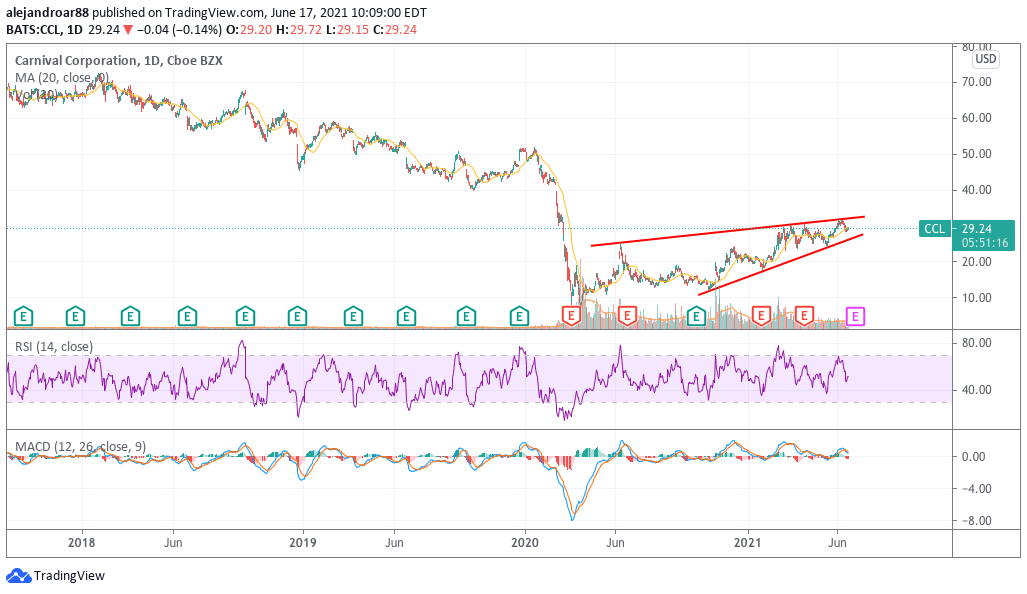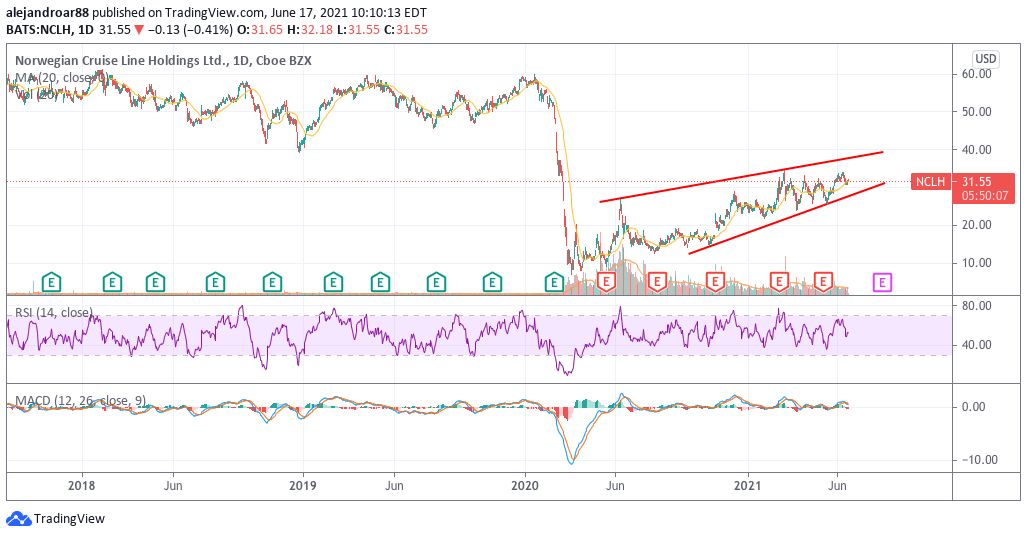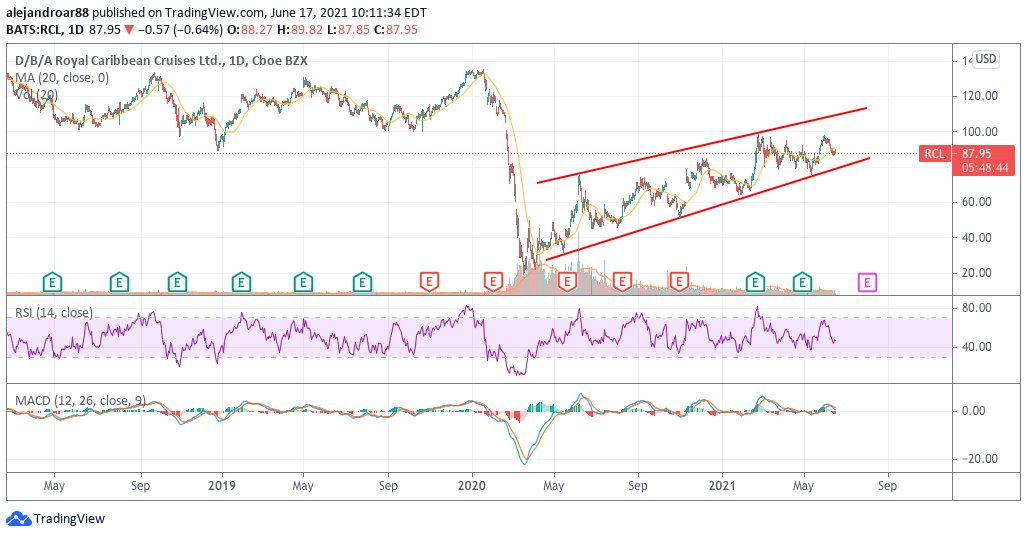5 Best Cruise Line Stocks to Invest in for June 2021
Please note that we are not authorised to provide any investment advice. The content on this page is for information purposes only.
With vaccinations rolling out at a fast pace in the developed world it is fairly understandable that investors have found tourism stocks quite attractive ahead of a bounce in their top-line and bottom-line results.
Meanwhile, the US Center for Disease Control and Prevention (CDC) has given cruise lines the green light to start operating some “trial voyages” in US waters by grating operators a Conditional Sailing Certificate.
In the context of this upcoming recovery for what has been one of the most battered segments of the travel and leisure industry during the pandemic, the following article aims to provide insightful information about the top three cruise ship operators you could invest in while also mentioning two non-traditional cruise ship stocks you may consider if you would like to get exposure to this sector.
1. Carnival Corp (CCL)

So far this year, the performance of Carnival Corporation (CCL) shares has outpaced that of its two other publicly traded rivals, with the stock delivering a remarkable 36% gain since 2021 started.
Prior to the pandemic, Carnival shares were quite attractive as the company managed to triple its earnings from 2013 to 2019, with a total of $3 billion in net income produced by the end of such year at a compounded annual growth rate of 19%.
However, the virus crisis turned the tables for the cruise operator and forced it to ramp up its long-term commitments from $9.7 billion to almost $28 billion by the end of the first quarter of 2021 on assets of around $57 billion. It is important to note that the book value of cruise operators’ vessels always accounts for most of their assets.
Meanwhile, Carnival’s top-line continues to be fairly depressed as the firm hasn’t been able to fully resume its activities.
For now, analysts estimate a full-blown resumption of the firm’s operations by the third quarter of this year, with sales expected to land at $3.5 billion while profitability is not expected to go back to positive territory until the second quarter of 2022.
At a market capitalization of $32 billion, of which $11.5 billion are cash that may or may not be burned in the following quarters until operations fully resume, Carnival is being valued at around 7 to 10 times its pre-pandemic bottom-line results.
Even after considering that interest expenses will probably eat a large portion of Carnival’s profitability in the near future, the current valuation still seems attractive if you are willing to hold on to the shares for two to three years until the world gets back to what it was before the virus situation stroked.
67% of all retail investor accounts lose money when trading CFDs with this provider.
2. Norwegian Cruise Line Holdings (NCLH)

Norwegian Cruise Line Holdings (NCLH) is the second-best performer among publicly traded cruise ship operators so far this year, delivering a solid 25.4% gain to investors since 2021 started.
Before the pandemic, the firm had managed to multiply its net profits by 9 times, moving from $103 million back in 2013 to $930 million by the end of 2019 at a solid compounded annual growth rate of 44%.
The pandemic forced the firm to take around $12.5 billion in debt, with long-term commitments currently standing at $21.5 billion on assets of $34.35 billion. This slightly higher debt-to-assets ratio of 62.5% compared to Carnival’s 49% ratio is perhaps the reason why the company’s performance has been lower than that of its rivals as the market is demanding a higher premium for the stock amid the firm’s increased solvency risk.
However, the stock is trading at only 12 times its 2019 full-year earnings and, considering the company’s impressive track record of bottom-line growth, I believe that Norwegian could offer a sizable upside potential once operations are fully resumed.
67% of all retail investor accounts lose money when trading CFDs with this provider.
3. Royal Caribbean Group (RCL)

Royal Caribbean is lagging behind its two peers this year as the stock has delivered an 18.5% gain so far in 2021 – almost 17% less than the upside that Carnival shares saw during the same period.
Before the pandemic, the firm had a stellar track record of profitability growth, with its net earnings moving from $474 million back in 2013 to $1.9 billion by the end of 2019 at a solid compounded annual growth rate of 26%.
Meanwhile, from the perspective of solvency, the firm had to take in around $12.5 billion in debt to survive the health crisis and that has pushed its debt-to-assets ratio to 58%, which makes it the second most leveraged company within the group.
At the current market capitalization of $22.4 billion, the firm is trading at roughly 12 times its 2019 pre-pandemic net earnings and, similar to its peers, this valuation seems fair based on the risks that these companies are still facing.
67% of all retail investor accounts lose money when trading CFDs with this provider.
4. Disney (DIS)
Perhaps these two names may not be as familiar to you as the three I listed above. However, Disney (DIS) is also a cruise operator that owns four vessels.
Before the pandemic, the company had been planning to expand its fleet of cruises to add three more ships which should be delivered in 2021, 2022, and 2023 respectively. This division is a part of Disney’s Parks, Experiences, and Products business unit and it contributed a portion of the $26.22 billion in revenues that the company made from this segment by the end of the 2019 fiscal year.
67% of all retail investor accounts lose money when trading CFDs with this provider.
5. Saga Plc (SAGA)
Meanwhile, Saga Plc (SAGA) is a British company that provides tourism solutions in the United Kingdom. The company owns a small fleet of cruise ships that generated $96.6 million for the company’s top-line back in 2019, which represented almost 20% of Saga’s total travel-related revenue.
Although these are not pure-play cruise operators, investors may consider these companies as potential plays in the cruise line industry as a rebound in the revenues produced from this particular segment of their businesses could boost their top-line results over the coming years.
67% of all retail investor accounts lose money when trading CFDs with this provider.







